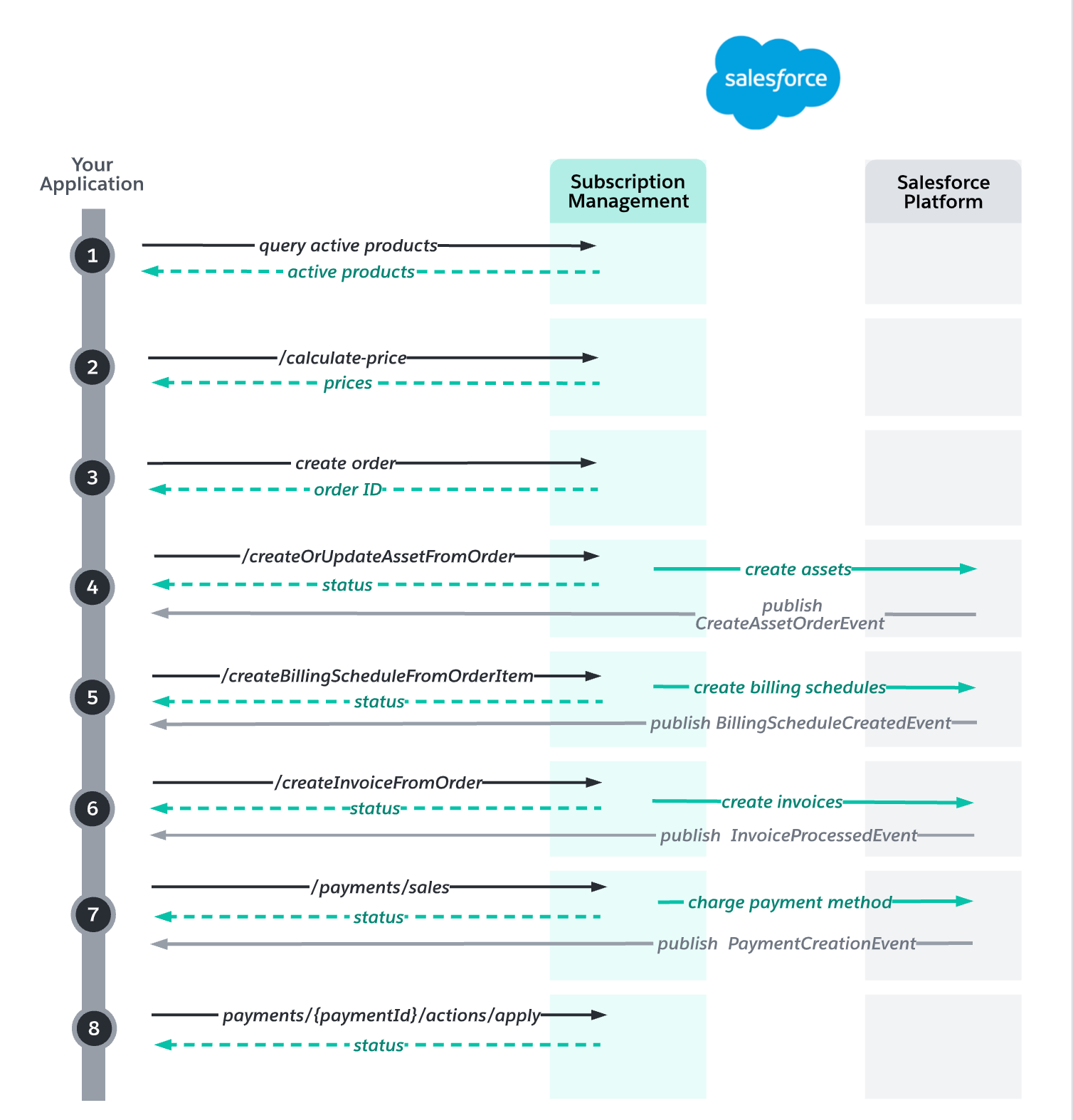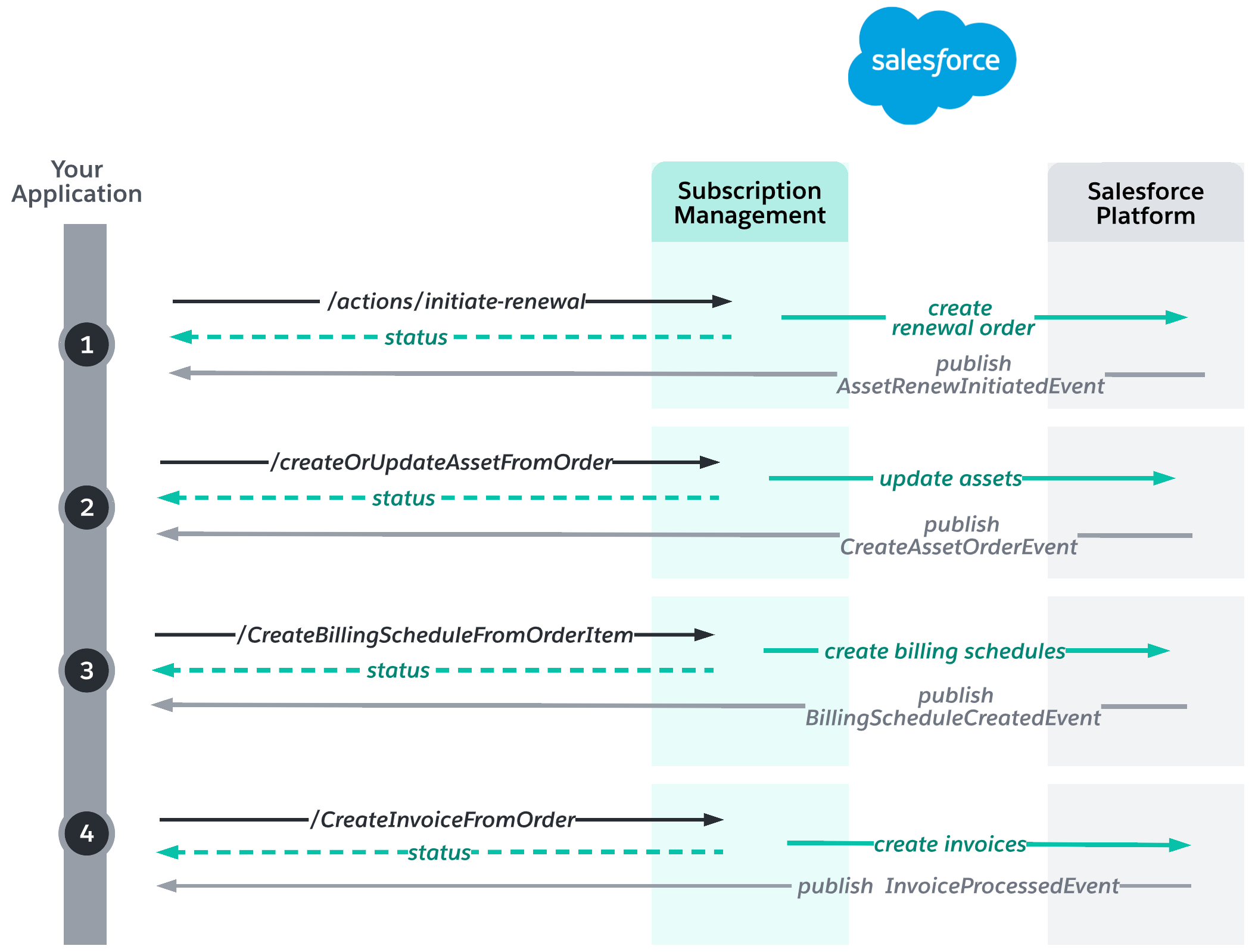Get Started with Subscription Management API
Build product-to-cash solutions that support your recurring revenue business. Create scalable and automated processes for selling, invoicing, and recognizing revenue from subscription products and one-time sales.
Follow these examples to connect Subscription Management endpoints and build your solutions. Understand how information flows through Salesforce objects to support your company's business requirements.
Use the buy now example to build to your end-to-end recurring revenue solution.
- Select and price your products, then create and activate your order.
- Create assets to track what your customer has purchased over the lifetime of their subscription.
- Create a billing schedule and generate the invoice for the first billing period.
- Charge the payment method on file for the first billing period, then apply the payment to the invoice.

For detailed steps, see Buy Now Example.
Use the increase subscription quantity example to let your customers purchase more of what they already have.
- Pass in your upsell pricing strategy, for example "list price". We calculate the new line item amounts and create the amendment order.
- Pass in the amendment order. We update your assets with the new total amount, quantity, start and end date, and monthly recurring revenue. With updated assets, you can build an accurate timeline of subscription changes and analyze trends.
- Using the amendment order again, we can create a new billing schedule to reflect the upsell, and then create the next invoice.

For detailed steps, see Increase Subscription Quantity Example.
Use the decrease subscription quantity example to let your customers reduce the quantity of their existing subscriptions.
- Pass in the reduction in quantity. We calculate the line items amounts for the amendment order using the prices from the most recent transactions ("last-in-first-out").
- Pass in the amendment order. We update your assets with the new total amount, quantity, start and end date, and monthly recurring revenue. With updated assets, you can build an accurate timeline of subscription changes and analyze trends.
- Using the amendment order again, we can create a new billing schedule to reflect the downsell, and then create the next invoice.

For detailed steps, see Decrease Subscription Quantity Example.
Use the renew subscription example to let your customers renew their subscriptions.
- Pass in your renewal terms and pricing type; for example, a one-year renewal at the last negotiated price. We calculate the line item amounts and create the renewal order for you.
- Pass in the renewal order. We update your assets with the new total amount, quantity, start and end date, and monthly recurring revenue. With updated assets, you can build an accurate timeline of subscription changes and analyze trends.
- Using the renewal order again, we create a new billing schedule to reflect the renewal, and then create the next invoice.

For detailed steps, see Renew Subscription Example.
Use the cancel subscription example to let your customers terminate their subscription early.
- Pass in the termination date. We calculate the new line item amounts and create the cancellation order.
- Pass in the cancellation order. We update your assets with the new total amount, quantity, start and end date, and monthly recurring revenue.
- Using the cancellation order again, we can create a new billing schedule for the cancellation, and then create the next invoice.

For detailed steps, see Cancel Subscription Example.